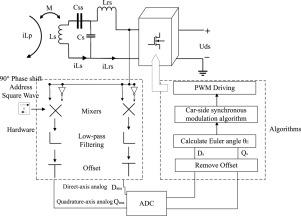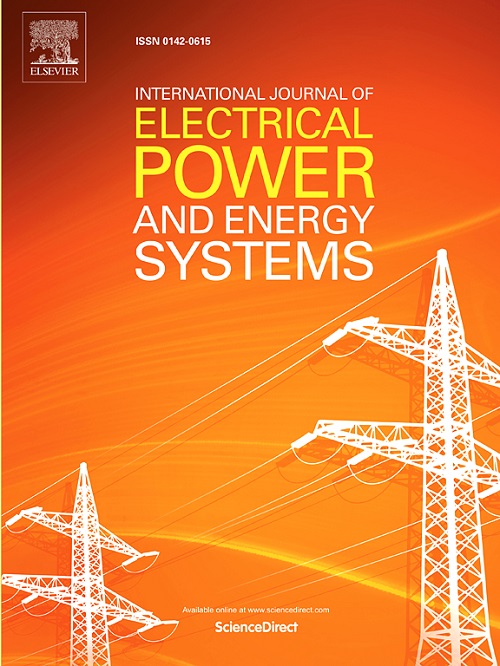基于TPS的双向无线输电系统宽ZVS范围和自动欧拉角优化控制策略
IF 5
2区 工程技术
Q1 ENGINEERING, ELECTRICAL & ELECTRONIC
International Journal of Electrical Power & Energy Systems
Pub Date : 2025-09-25
DOI:10.1016/j.ijepes.2025.111133
引用次数: 0
摘要
在本研究中,建立了宽ZVS工作范围和BDWPT系统效率优化的控制策略。研究了具有双面LCC补偿网络的BDWPT系统中采用三相移的匹配要求。为了管理潮流和匹配负载,建议采用最佳的TPS控制机制。提出了双侧LCC补偿网络的频域和时域模型来进一步解释BDWPT系统的行为。通过对谐振电流的分析,提出了在TPS条件下自动欧拉角函数的操作方法和基相移角的重新分配方法。这些评估表明,在大多数负载情况下,采用建议的TPS控制策略,系统可以在较宽的ZVS运行范围内运行。建立了一个3.3kW BDWPT系统原型来验证理论分析。观测到的波形与所建议的模型相当吻合。系统的实测峰值效率为90.35%。所有功率开关在整个功率和传输范围内实现各种输出场景的宽耦合系数ZVS。本文章由计算机程序翻译,如有差异,请以英文原文为准。

Optimization control strategy of wide ZVS range and automatic Euler angle for bi-directional wireless power transfer system by TPS
In this study, a control strategy for broad ZVS operating range and BDWPT system efficiency optimization was created. The matching requirements for using TPS (three phase shift) in a BDWPT system with a double-sided LCC compensated network are investigated. To manage power flow and match loads, an optimum TPS control mechanism is recommended. The frequency and time domain models of the double-sided LCC compensated network are suggested to further explain the behavior of the BDWPT system. By analyzing the resonant currents, a technique for operating the automated Euler angle function under TPS and redistribution of the fundamental phase shift angle is proposed. These evaluations reveal that the system can operate within a broad ZVS operating range under the majority of load scenarios with the suggested TPS control strategy. A 3.3kW BDWPT system prototype is created to verify the theoretical analyses. The observed waveforms and the suggested model correspond rather well. The system’s measured peak efficiency is 90.35%. All power switches achieve ZVS with wide coupling coefficients for various output scenarios over the whole power and transmission range.
求助全文
通过发布文献求助,成功后即可免费获取论文全文。
去求助
来源期刊
CiteScore
12.10
自引率
17.30%
发文量
1022
审稿时长
51 days
期刊介绍:
The journal covers theoretical developments in electrical power and energy systems and their applications. The coverage embraces: generation and network planning; reliability; long and short term operation; expert systems; neural networks; object oriented systems; system control centres; database and information systems; stock and parameter estimation; system security and adequacy; network theory, modelling and computation; small and large system dynamics; dynamic model identification; on-line control including load and switching control; protection; distribution systems; energy economics; impact of non-conventional systems; and man-machine interfaces.
As well as original research papers, the journal publishes short contributions, book reviews and conference reports. All papers are peer-reviewed by at least two referees.

 求助内容:
求助内容: 应助结果提醒方式:
应助结果提醒方式:


